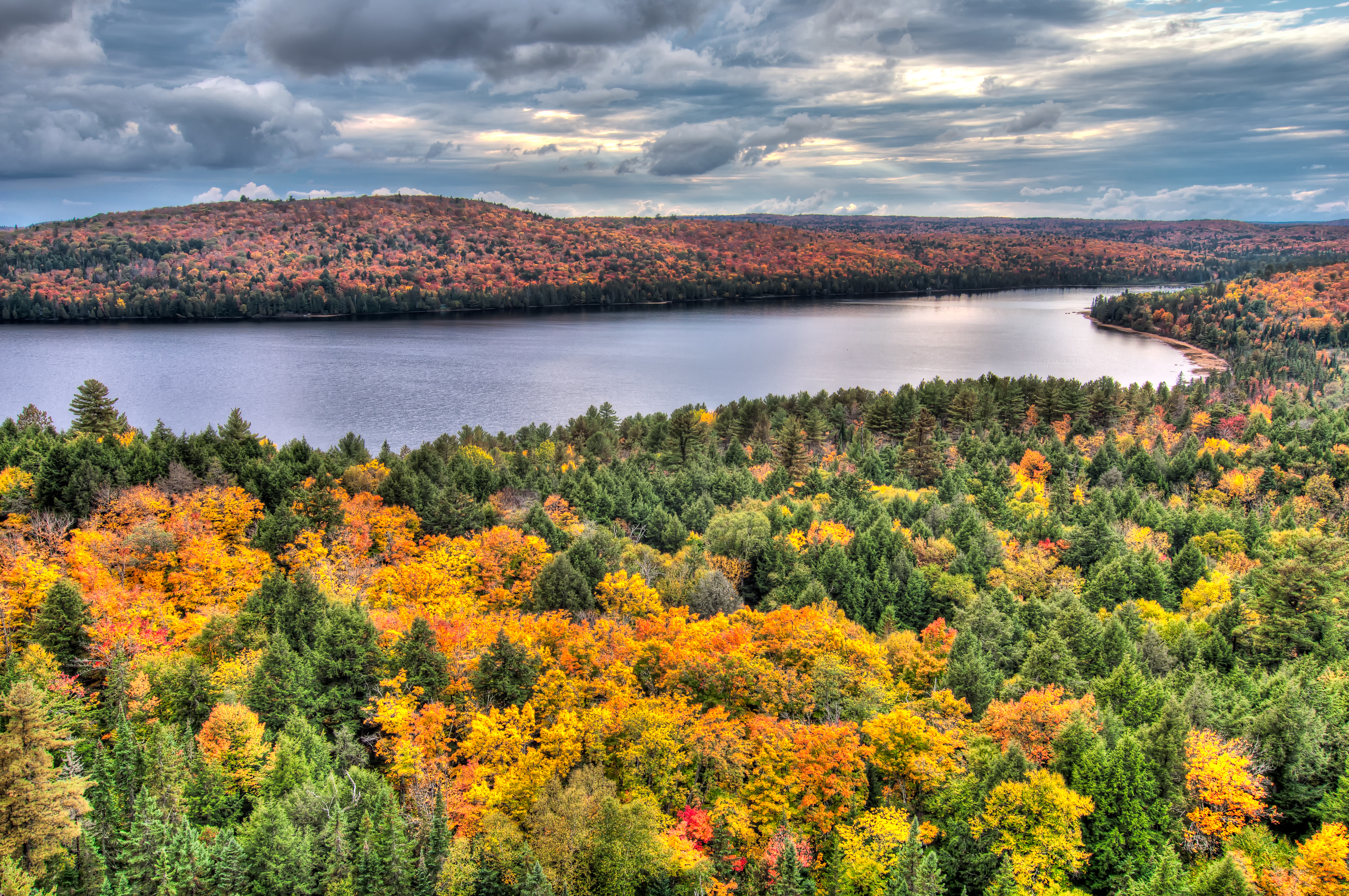
Rock Lake (Algonquin Provincial Park, Ontario) in the fall. Image © James Wheeler via Gallery.World (Creative Commons BY-NC-SA 3.0 license).
Fall is a beautiful season, filled with golden hope and burgundy possibilities. The green colour of leaves changes to a colourful mix of yellow, orange, and red. Have you ever wondered why? If you have (and even if you have not but are wondering now), let’s take a look at the science behind the fall foliage.
Leaves develop over spring and summer, and in the fall, they start to age. But there are complex processes behind this. They include changes in the pigments that give them colour. The green leaf pigment chlorophyll breaks down, while carotenoids (yellow) are retained, and anthocyanins (red) are produced.
In the fall, nutrients and other components that support leaf health are withdrawn. This process leaves yellow carotenoids behind, causing the bright yellow and golden appearance seen in many fall leaves. However, we often see yellow leaves with scattered green patterns. These patterns are caused by fungi infections. Fungi produce a plant hormone, cytokinin, that inhibits the aging process and causes some of the green chlorophyll to remain.
The red colour palette of fall leaves is produced right before the leaves fall to the ground. The red pigments are thought to protect plants from photooxidative damage (that is, damage from sunlight), support nutrient redistribution, and defend against aphids.
But what happens to the green leaf pigment, chlorophyll? Prior to 1991, we did not know. A breakthrough came that year from Austria when Bernard Kräutler from the University of Innsbruck identified the first compound that is a result of the chlorophyll breakdown. In fact, over the next twenty-six years, Kräutler and other scientists identified about 20 more compounds, many of which were found to exhibit different colours. These findings helped explain some of the shades of yellow, pink, and red seen in leaves.
Albert Camus once said: “Autumn is a second spring where every leaf is a flower.” Whether these fall flowers have carotenoids, compounds of chlorophyll breakdown, or anthocyanins, I will still spend my weekend raking the leaves.
By: Olena Shynkaruk

Olena Shynkaruk, Ph.D., is a freelance science writer and editor with a love for languages. She is a Ukrainian Canadian who has studied, worked, and presented internationally. Her experience as a science communicator includes grant writing, manuscript editing, copywriting, and working as a contributing writer for Lab Manager magazine. Feel free to connect with Olena on LinkedIn or email her at olenaoshynkaruk@gmail.com.
